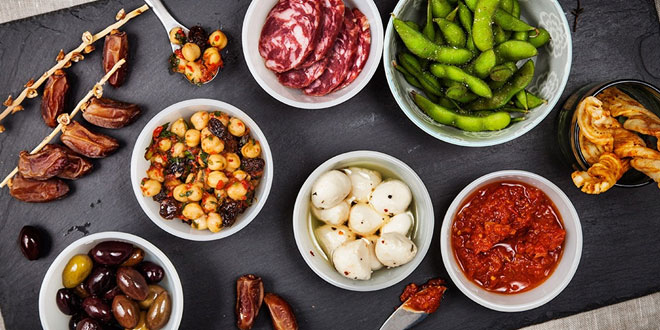
Which Diet Type Best Suits Your Needs?
There are plenty of diets to choose from these days. To find one that best suits your needs or goals — and which seems feasible — here’s a look at of some of the most popular diets of the moment.
The alkaline diet: banish acidity
The alkaline diet seeks to reduce the effects of foods that increase acidity levels in the blood when digested. The program claims to rebalance the body through a diet comprising two-thirds alkalizing foods (like green vegetables) and one-third acidifying foods (meat, cheese). Alkaline dieters can eat carbohydrate, protein and fat, but the focus is firmly on raw, seasonal produce, green vegetables and fruit.
Chrono nutrition: four meals a day
Chrono nutrition is based on the idea of respecting the body’s natural rhythms. Followers can eat what they like, but only at fixed times of day. So rather than cutting out certain foods, this diet — developed by French nutritionist Dr Delabos — puts different food groups in different meals. The day starts with a hearty breakfast including animal fats, followed by a dense, protein- and carb-based lunch, a sweet snack in the afternoon and a light meal in the evening to prevent excess calories being stored overnight. Dark chocolate is allowed every day, but not after 5pm.
Detox diets: cleanse and purify
A detox is more of a short-term program than a long-term diet. Detoxing aims to flush toxins out of the body. This generally takes around a week, and often starts with a phase of around three days where detoxers eat just one kind of food, usually with unlimited fruit, and lots of water and herbal teas. Cooked vegetables are progressively reintroduced, followed by protein (meat, fish, eggs) over the last two days.
The Dukan diet: go for protein
This diet is very strict in the foods it allows followers to eat, but these can be consumed in unlimited quantities. This controversial diet is a high-protein and low-calorie program that cuts fat and carbohydrate intake. This encourages the body to use up its fat stores (adipocytes) to get the energy it needs to keep muscles functioning. As fat stores are used, fatty acids are released into the bloodstream, making the liver and kidneys work harder. Weight loss can be very quick in the first phase of the diet — the attack phase — which lasts around seven days (approximately 5kg).
Low FODMAP diet: beat the bloat
Developed by an Australian nutritionist in 2005 for sufferers of irritable bowel syndrome, this eating program involves avoiding a family of carbohydrates called FODMAPs. FODMAPS are types of sugars that are poorly absorbed by the body. These are naturally present in certain vegetables, cereals, pulses, fruit, mushrooms, dairy products and certain “low sugar” products. Eating FODMAPs can lead to bloating and stomach ache after meals, as the sugars ferment in the intestine. Fruits allowed as part of the diet include bananas, grapes, grapefruit, kiwis, mandarins, oranges, passion fruit, pineapple and tomatoes.
Blood type diet: each to their own
For the American nutritionist James d’Adamo, people with blood types A, B, O and AB shouldn’t eat the same things to lose weight and stay healthy. This is due to the different antibodies developed in relation to the chemical composition of each specific blood group. Four different profiles exist. The “O group” should eat meat and vegetables but avoid dairy products and carbs. The “B group” should fill up on dairy products, green vegetables, meat and eggs, while avoiding chicken, corn, peanuts and lentils. The “A group” should follow a vegetarian diet, with lots of fruit, vegetables and cereals but no meat, beer, dairy products or beans.
The Mediterranean diet or the Okinawa diet: eating for longevity
Following the same diet as inhabitants of the Greek island of Crete or the Japanese island of Okinawa (home to the world’s highest number centenarians) is thought to increase life expectancy. The Mediterranean diet is based on the regular but moderate consumption of red wine, as well as tea, olive oil, plus fruit and vegetables rich in flavonoids and antioxidants which keep the heart healthy. The Okinawa diet is a pescetarian regime that includes vegetables, algae, wholegrains and legumes, fruit, high-calcium foods (broccoli, fish, yogurt, cheese, etc.), fish, seafood, and nuts and seeds rich in omega 3.
Paleo: eat like a caveman
This diet, based on what humans ate in the Paleolithic era, can help dieters shed up to 1kg of fat per week. Eating paleo involves excluding all cereals and dairy products, as well as beans and legumes, starchy vegetables like potatoes, fatty meats, salt, sugar, and all forms of processed food and fizzy drinks. Inspired by our hunter-gatherer ancestors, the diet is based on lean meats, poultry, fish, seafood, fruit and non-starchy vegetables, as well as all kinds of nuts and seeds (almonds, sunflower seeds, etc.).
Source: AFP/Relaxnews

